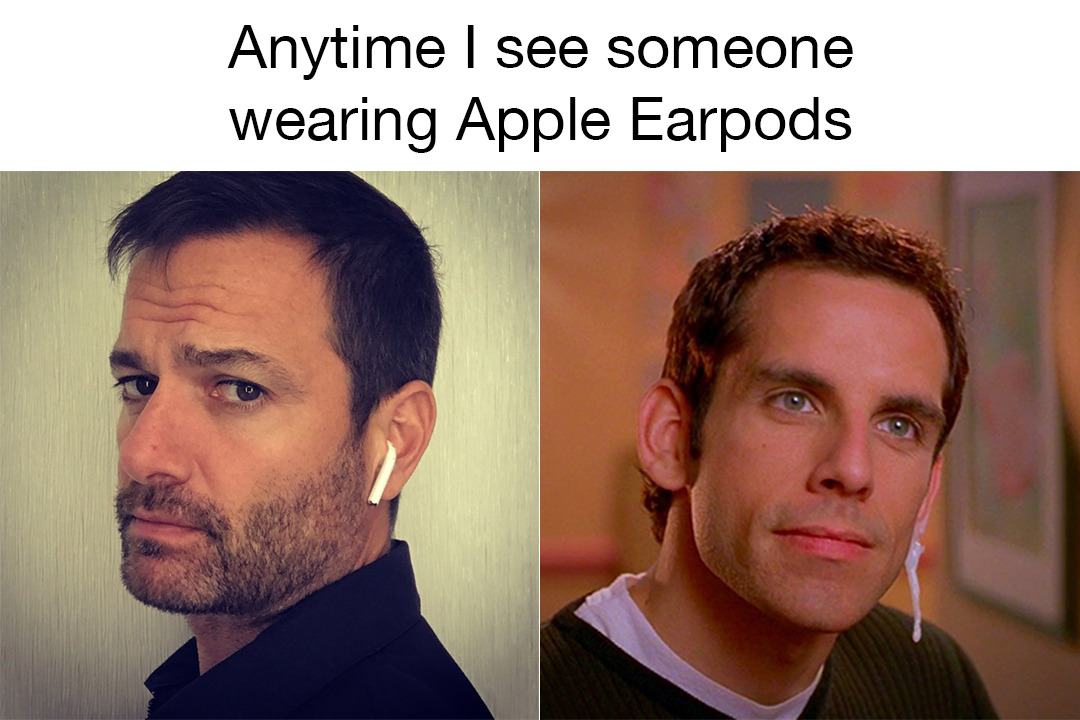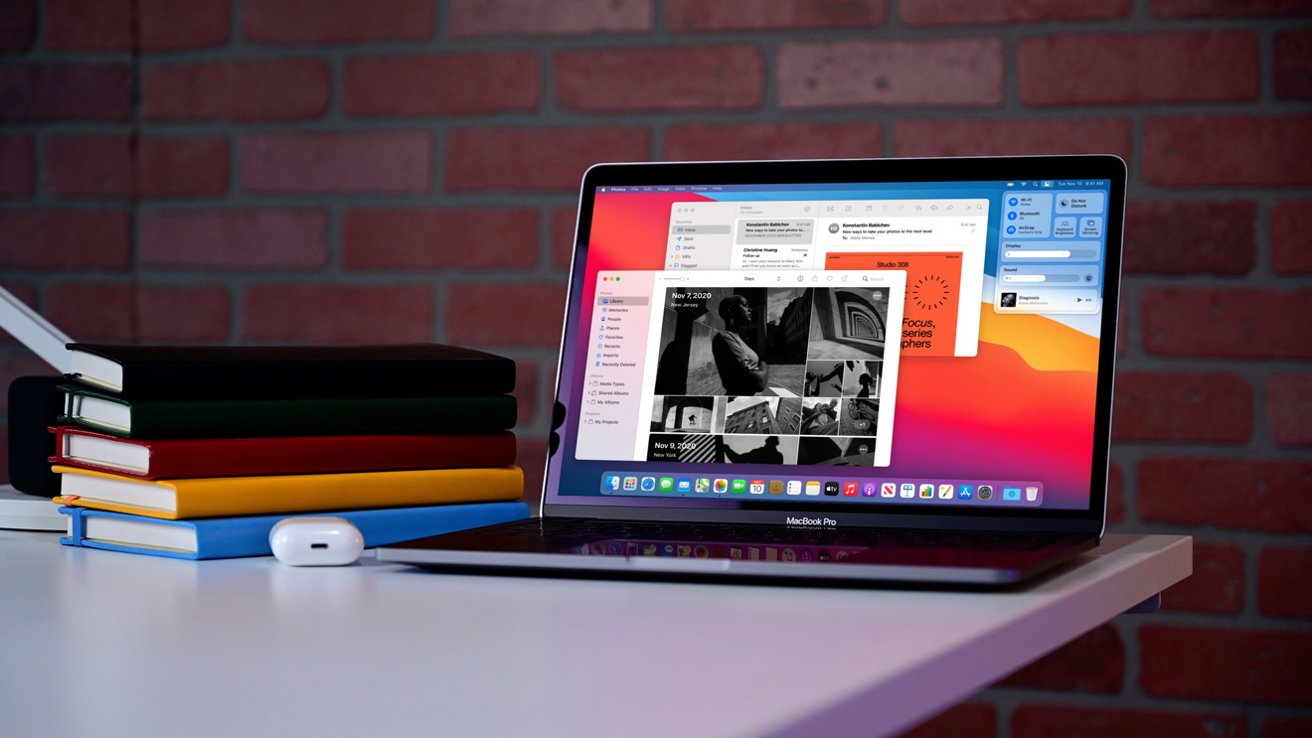AppleInsider · Kasper's Automated Slave
About
- Username
- AppleInsider
- Joined
- Visits
- 51
- Last Active
- Roles
- administrator
- Points
- 9,827
- Badges
- 1
- Posts
- 63,192
Reactions
-
Stolen Device Protection to thwart iPhone thieves with passcodes with time delay
If a thief can steal an iPhone and passcode, they can lock the user out of their Apple ID and wreak havoc within seconds, but Apple's Stolen Device Protection feature coming in iOS 17.3 will stop that from happening.
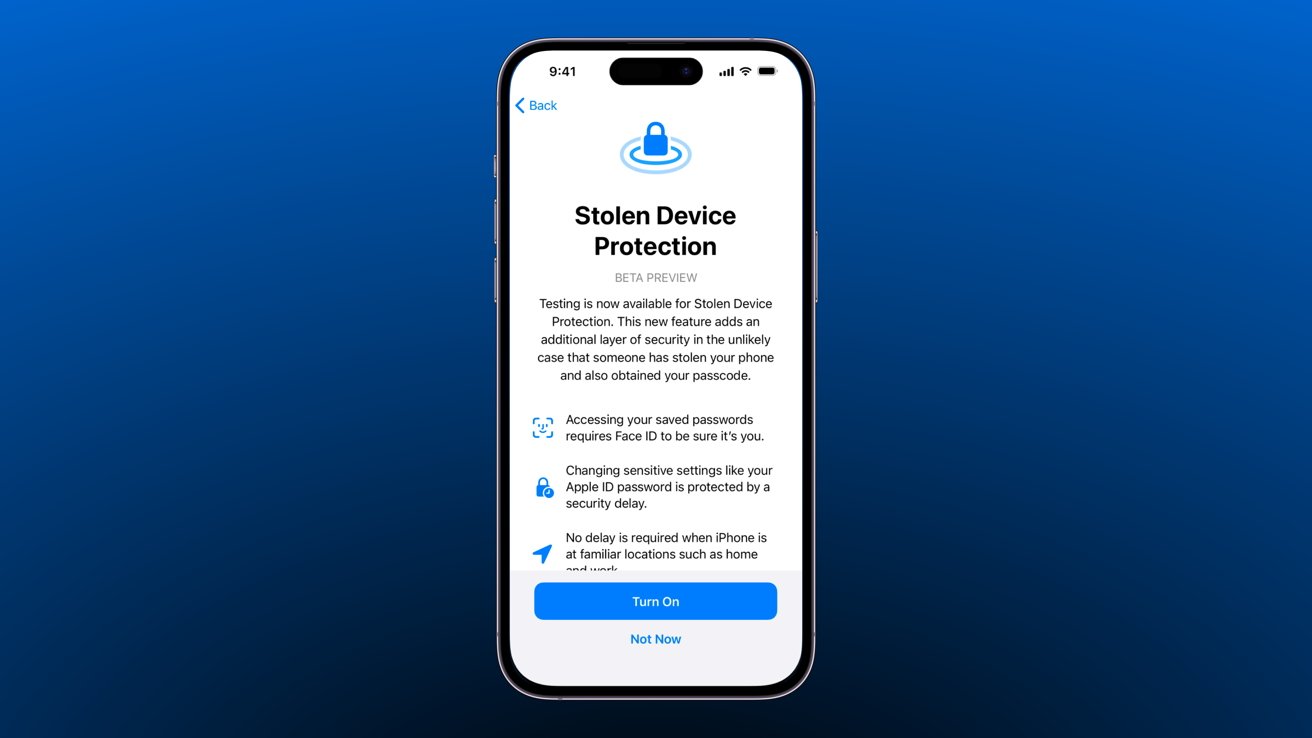
Stolen Device Protection
A February report revealed that iPhone users were being targeted by thieves that would use sneaky tactics to learn a device passcode, then steal the device. As the thief gets away, they can use the passcode to change the Apple ID password, kick the user out of signed-in devices, and have complete control of the account within seconds.
Apple will solve this issue by implementing an optional security delay to alter critical information in a future iOS update. The feature is called Stolen Device Protection and will activate when outside of trusted locations like home or work.
With Stolen Device Protection active, users won't be able to change critical portions of their Apple ID or device settings without waiting an hour and authenticating biometrics twice. Theoretically, a theft victim would notice their device has gone missing within the hour window, allowing them to set the iPhone to Lost Mode and stopping device access or account changes from being possible.
Since users won't be able to rely on the passcode fallback option, biometrics will be required for various actions with Stolen Device Protection enabled.
Biometrics are required when:- Using passwords or passkeys saved in Apple Passwords
- Applying for a new Apple Card
- Viewing the Apple Card virtual card
- Turning off Lost Mode
- Erasing all content and settings
- Take certain Apple Cash and Savings actions in Wallet
- Using payment methods saved in Safari
- Using your iPhone to set up a new device
The above actions will prompt the user for biometrics like Face ID or Touch ID to continue. A thief will likely not be able to fake biometric authentication.
Certain operations will still fall back to a passcode, like when authenticating Apple Pay. In that instance, users will be able to use their bank's fraud protection to get funds back if a thief makes an unauthorized transaction.
The security delay will appear when attempting to change critical settings like the Apple ID password. If the thief tries to access the following settings, they must authenticate biometrics, agree to a one hour delay, then authenticate biometrics again after the hour to complete the action.
Security delay occurs when:- Changing your Apple ID password
- Updating Apple ID account security settings, like removing a trusted device, trusted phone number, Recovery Key, or Recovery Contact
- Changing your iPhone passcode
- Adding or removing Face ID or Touch ID
- Turning off Find My
- Turning off Stolen Device Protection
Trusted locations learned by the system, like home or work, remove the security delay. The security delay applies even with biometrics present, so it may be inconvenient to wait an hour every time one of the above settings needs to be altered, so trusted locations alleviate that.
Stolen Device Protection should give victims enough time to discover their device is missing, log into their Apple ID, and then activate Lost Mode. Once the device is in Lost Mode, the thief can no longer access the device, alter settings, or do anything without biometrics.
Thanks to that one hour delay, if thieves somehow steal a device, unlock it with a known passcode, navigate to the Settings page to initiate a change, then trick the victim into verifying biometrics for that first scan, the theif would still need to wait another hour to complete the change. It is incredibly unlikely that the thief will stick around or have access to the victim twice in that hour, eliminating the ability for things like Apple ID passwords to be changed by theives altogether.
An Apple representative explained that Stolen Device Protection is available in beta as a toggle in Face ID & Passcode settings. A later iOS release, likely the full release of iOS 17.3, will present the feature to users during onboarding.
Read on AppleInsider
-
Apple releases tvOS 17.2 with 3D movies and better system navigation
Apple has updated its home entertainment experience with the release of tvOS 17.2, which brings features like 3D movies for the Vision Pro headset.
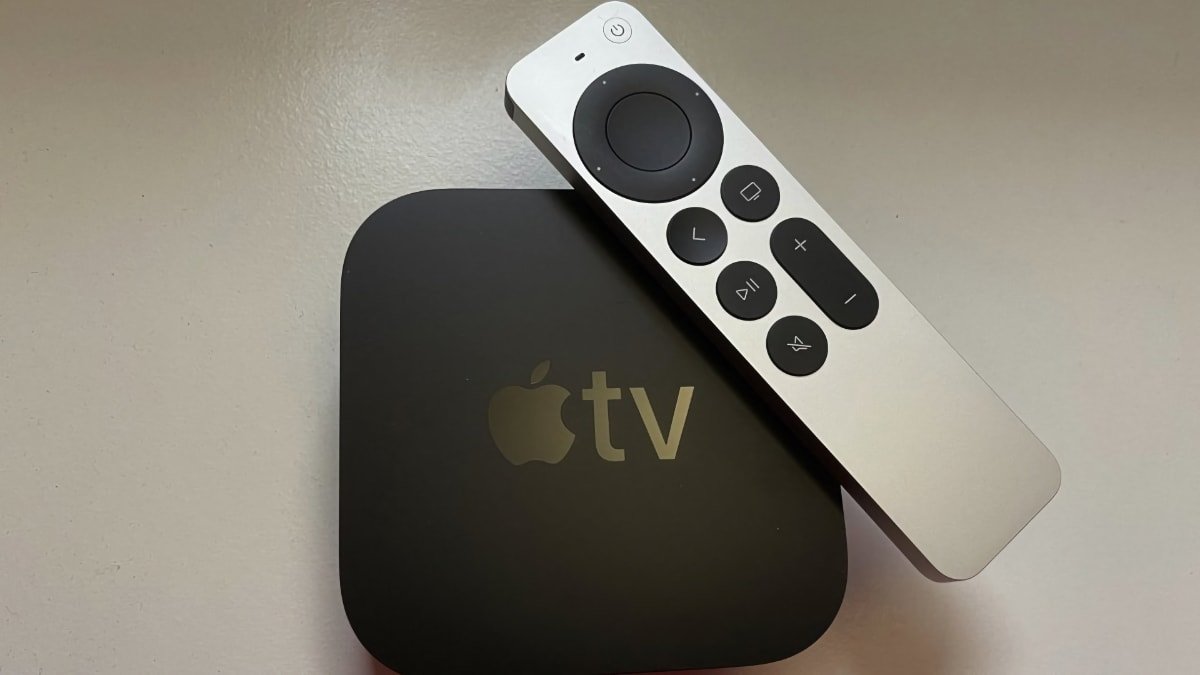
The latest tvOS update brings 3D movies
Following the launch of the most recent tvOS 17.2 beta update on November 14, Apple has formally rolled out the latest iteration of its operating system tailored for the Apple TV.
One of the most notable additions is the support for 3D movies, which aligns with the anticipated launch of the Apple Vision Pro in early 2024. It was first spotted on November 9, which noted the presence of a new 3D logo on certain movies in the iTunes Movie Store, hinting at Apple's preparation for a more immersive viewing experience.
The update also significantly improves the Apple TV app, simplifying navigation and content discovery. A newly designed sidebar organizes content from various apps and streaming services, including Apple TV+, with dedicated sections for Search, Watch Now, MLS Season Pass, Sports, Store, and Library.
Additionally, a "Channels and Apps" area allows users to access content from specific services such as ABC, CBS, Comedy Central, Hulu, ESPN, Discovery, Peacock, Prime Video, and more.
At the same time as updating tvOS, Apple has introduced an update to HomePod Software bringing it to version 17.2.
Read on AppleInsider
-
What's Apple's Vision Pro killer app?
Apple's upcoming immersive computing hardware has a ballpark price starting at $3,500. What Apple Vision Pro application could possibly stoke a sustainable mass-impulse to snatch up such a device in quantities sufficient to build a healthy business that Apple expects?
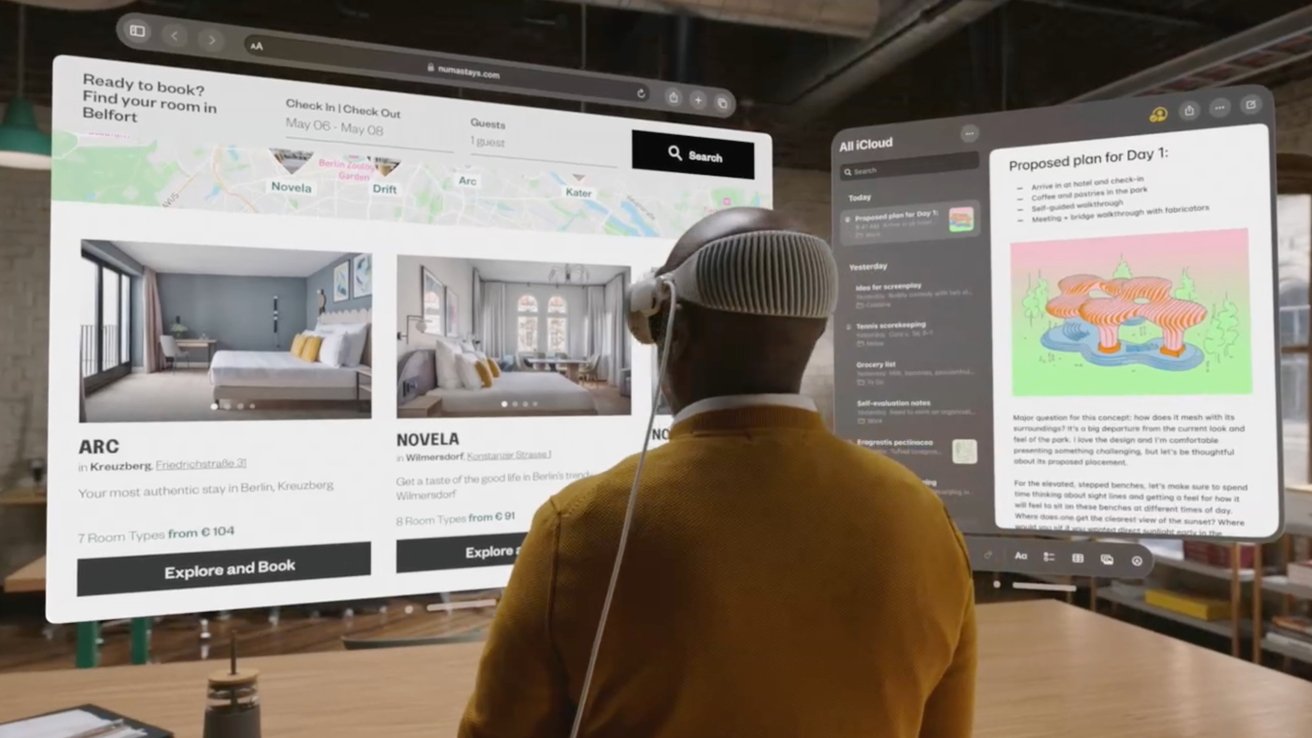
Vision Pro
When Apple pulled back the curtains at WWDC to show off its new Vision Pro hardware, the responses were so predictable that a middling AI bot could have written them out in advance.
From the Ballmeresque, pearl clutching of "but it's so expensive" to the defeatist handwringing of analysts who shared their concerns of how everyone's already tried everything in the VR product space and failed, through "everyone knows Apple can't innovate, and this other company already has something we should be talking about instead," the tech media's collective manufactured sausage-grinding has offered little more than a reheated response of we were last fed at the debut of iPod, iPhone, iPad, Apple Watch, and so on.
So perhaps, if these concerns have all ready been voiced to oblivion, they've also already been answered in a way that can offer us some insight into how this particular wrinkle of consumer tech will unfold for Apple, beginning in the upcoming year.This all happened before
The core tenants of how to blow out a blockbuster consumer tech product have been on public display dating back to the early year's of Apple's founding. As I detailed in the previous article, looking at how Apple has so consistently hit bangers out of the ballpark in a way that's changed how the world works, this firstly involves studying the status quo market and building a product that delivers a complete, even if flawed, solution to a need; then effectively communicating this value proposition to a large enough audience, while working with partners to deliver even wider options through software; and then operationally delivering the solution at scale with enough profitability to maintain the momentum.
In fewer words: "delivering a cohesive, valuable experience that Apple's customers will want to buy, and that Apple's partners will want to add value to."
Thus the question is set up. What specific sort of valuable experience can Vision Pro deliver that will bedazzle us to the point where enough of us not only spend serious coin to get it, but also that we collectively as a society will decide that this is something we want to be paying for on an ongoing basis, to enable an entirely new ecosystem of immersive applications that all need to be developed and maintained?
This is a preposterously high bar.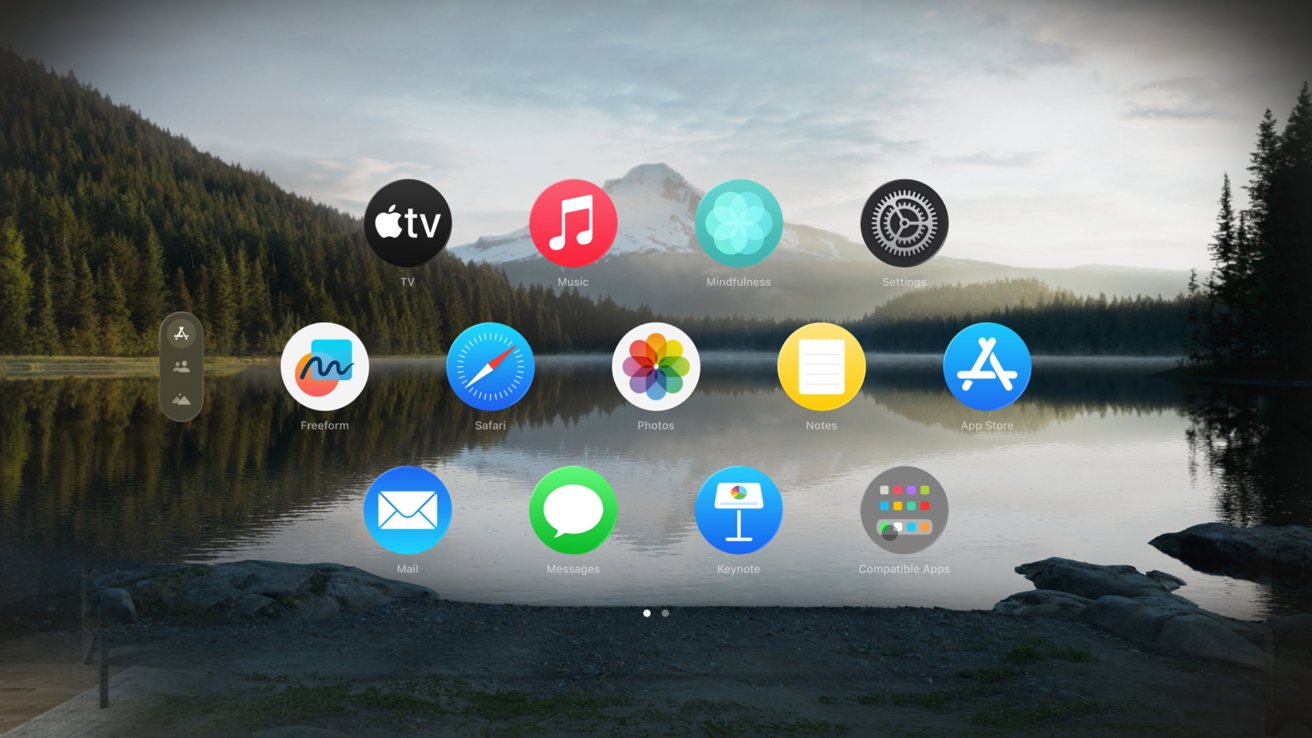
Is there a killer among Apple's Vision Pro apps?
Apple isn't just an artist that cranks out monumental, standalone works that attempt to "express an idea." For an Apple product to "work" and be considered minimally successful, it has to actually deliver a life changing level of value across a very large audience willing to pay actual money for it, and it has to pique the curiosity of third party thinkers to influence them to pour their lives into building new forms of interconnected utility or convenience or entertainment to add value to what's already there.
As it did with the original Apple II, the Mac, iPod, iPhone, iPad, Apple Watch and so on, Apple is launching not just a new hardware product for sale, but is also putting together an ecosystem of added value. This distinguishes Apple from other makers of products that largely provide a self-contained unit of value.
If you buy a fancy refrigerator, or a pair of shoes, or a car, or a potato peeler, much simpler laws of supply and demand determine if you get a good deal at an acceptable price and if the maker can continue their production goals and if the product is a hit or a flop.
With Vision Pro, Apple is launching an entire platform based on the concept that if there's software, the real end value will be astronomically higher than if its just a one trick pony that does a particular job, such as playing immersive games. The fun thing about Apple is that the company is remarkably good at successfully launching platforms, in a world where potential platforms of any kind are complicated, tricky, and littered with the bodies of failures.
Apple is good at making difficult look easy.Bigger than big
As is generally the case, Apple is not the first big mover in this emerging conceptual space of "immersive computing." Other vast tech titans have already spent enormous amounts of money to develop something seemingly comparable.
Notably, almost seven years ago Microsoft floated its HoloLens helmet, which on the surface seems to share some things in common with Vision Pro, including its $3,000 starting price tier. Yet since HoloLens first appeared as a "Development Edition" back in early 2016, and despite being subsidized by American government contractors as interesting technology it hasn't changed how the world works in any appreciable significant way. Certainly not for consumers.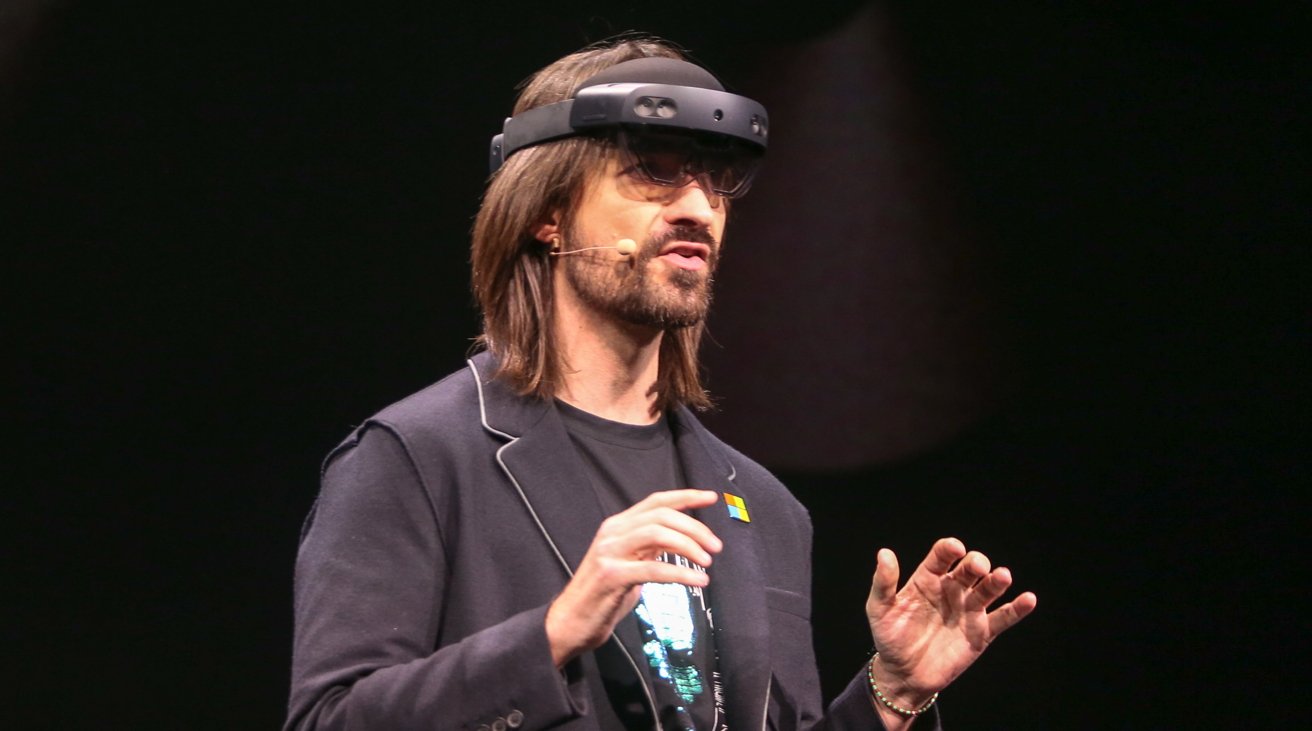
Microsoft's Holo future of the past
Three incremental generations in and billions of dollars under the bridge, HoloLens is an Intel-based Windows PC with custom graphics hardware to overlay projected images on top of what you're looking at. It's best shot at producing a "killer app" to drive sales was immersive learning, with the U.S. military making a large purchase for use in training as a quite literal killer app.
That idea was so disturbing to the Holo development team that a swath of the people who worked on it made a public protest that they were upset to see their efforts being used for such an application of "war and oppression."
Microsoft has a long and storied history of finding ways to repose its Windows PC to sit as a placeholder in various product categories, from a phone to a music player to a tablet to a watch. Yet all of these efforts ended up being busywork that didn't really change the world or even sell in commercially significant or successful quantities.
As the "opposite of Apple" in the consumer space, Microsoft can only shuffle around and recommend its one PC hit as a solution for new markets, but can't quite manage to actually pull this off. Certainly not as successfully as Apple, despite having blown so much money so many times in various attempts aimed at the same market.
HoloLens does however demonstrate that even a company with a vast ecosystem of Windows developers and gads of money can't figure out how to position an "immersive computing" product in a way that would entice anyone to buy it, even when defining the target audience as being limited to enterprise users.
But Microsoft was also a delusional mess in smartphones, in tablets, music players, watches, and in other areas that both preceded Apple's debut in those markets -- and in some cases attempted to turn around and copy Apple's delivered success -- all without ever really achieving any of its own. So the flop of HoloLens can't really provide any evidence that the public isn't potentially interested in immersive computing.
It only proves that big PC licensing companies with a lot of money can't figure out how to do the things that Apple can, with the seemingly effortless panache of a $3 trillion dollar, scrappy startup of 40 years.More than money
Another bag of money, this time from surveillance advertising, threw an outlandish amount of possibility at the goal of beating Apple into the world of immersive computing. Well, two. First was Google with its characteristic approach of half-assedly floating out some partially done work with the expectation that third parties would jump in and do all the heavy lifting needed to deliver a successful product, and that doe-eyed fanboys would go out and evangelize the public in why anyone wanted to buy this, largely based on the idea that it has a low price subsidized by all the surveillance advertising and spyware that covers some of the bill while converting the user into a product to be shaken down for their behavioral data.
Remember Cardboard? Google's VR goggle efforts were largely oriented around attaching an Android phone to your face. Importantly, neither Google nor its partners nor its fans really put enough effort into doing their jobs, so nothing ever materialized apart from a lot of people wasting some their time to look like clowns.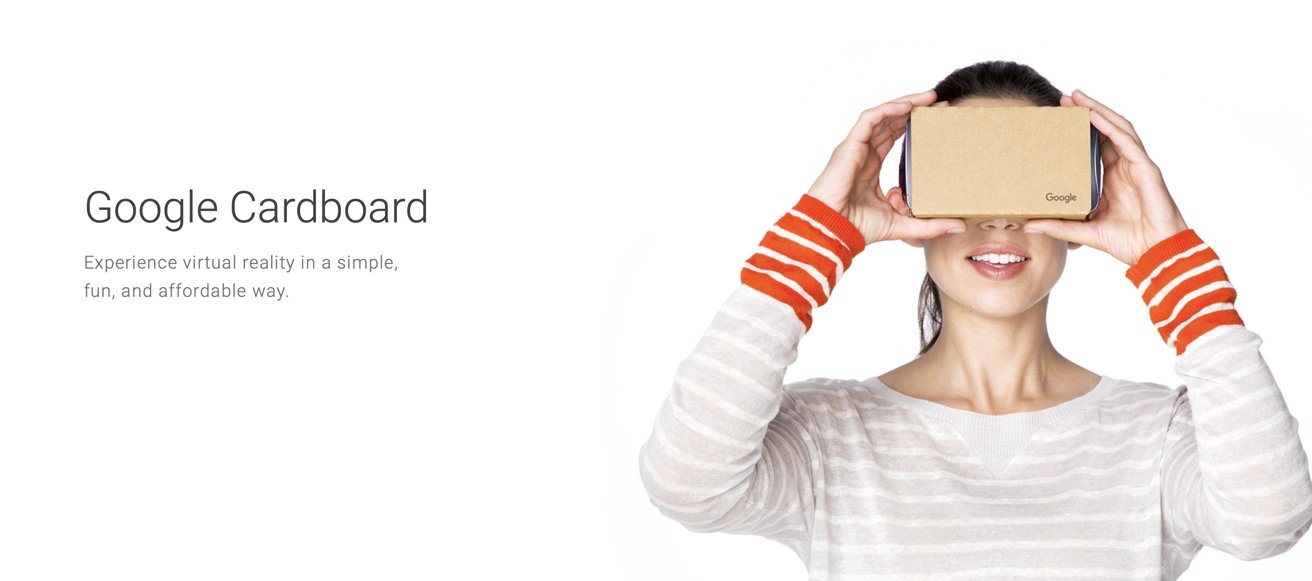
Google's affordable Cardboard
But that also doesn't prove there isn't a killer app in immersive computing. It just means that a major new category shift isn't easy to pull off in your spare time without much effort.
Google's repeated attempts at doing a lot -- but not enough -- of the critical work needed to build out a complete thought have all contributed to a graveyard of failed alphas and betas.
Facebook, the other surveillance advertising bag of money, took the most reasonable shortcut in acquiring Oculus' existing work rather than building its own VR helmet from scratch. Yet despite taking somebody else's already finished product and throwing huge sums at building a "meta world" as a differentiating killer app to drive adoption, Facebook is struggling to see real enthusiasm from consumer audiences.
This parallels Facebook's similar efforts in delivering a Facebook phone, the thing that was supposed to derail iPhone at multiple times.
Nothing could be more "meta" than trying to use marketing to concoct a gigantic, desperate platform of "metaverse" to add nuance to something where the only real value was what you know about something. Yet nothing of Facebook's Meta really delivers an attractive, sustainable, competitive framework of value that enough consumers will continue buy in a cycle.
Meta is effectively trying to sell Quest VR as a technology, a fun quirk of a thing that could be used to do something fun, but if only it were better and only if it could do something justifiably useful.Not just a Game
Like Meta's Quest, Sony's PlayStation VR, the HTC Vibe and others, much of the existing Virtual Reality headset space has centered on VR gaming as its killer app. And certainly, people who want to play games have represented the majority of interest in the immersion space. What else of commercial value could one accomplish, beyond training soldiers or technicians remotely, other than offer some sort of surround gaming experience?
Conversely, in the space of gaming based VR, goggle prices begin around $350-500, with Meta's higher end Pro model asking around $1,200. These prices can deliver a fun gaming experience, but are selling to a niche market: single digit millions. The lower prices are trying to reach a larger market, but that also prevents them from delivering core utility that can do much beyond basic gaming. How would someone get their company to buy a VR gaming toy for them?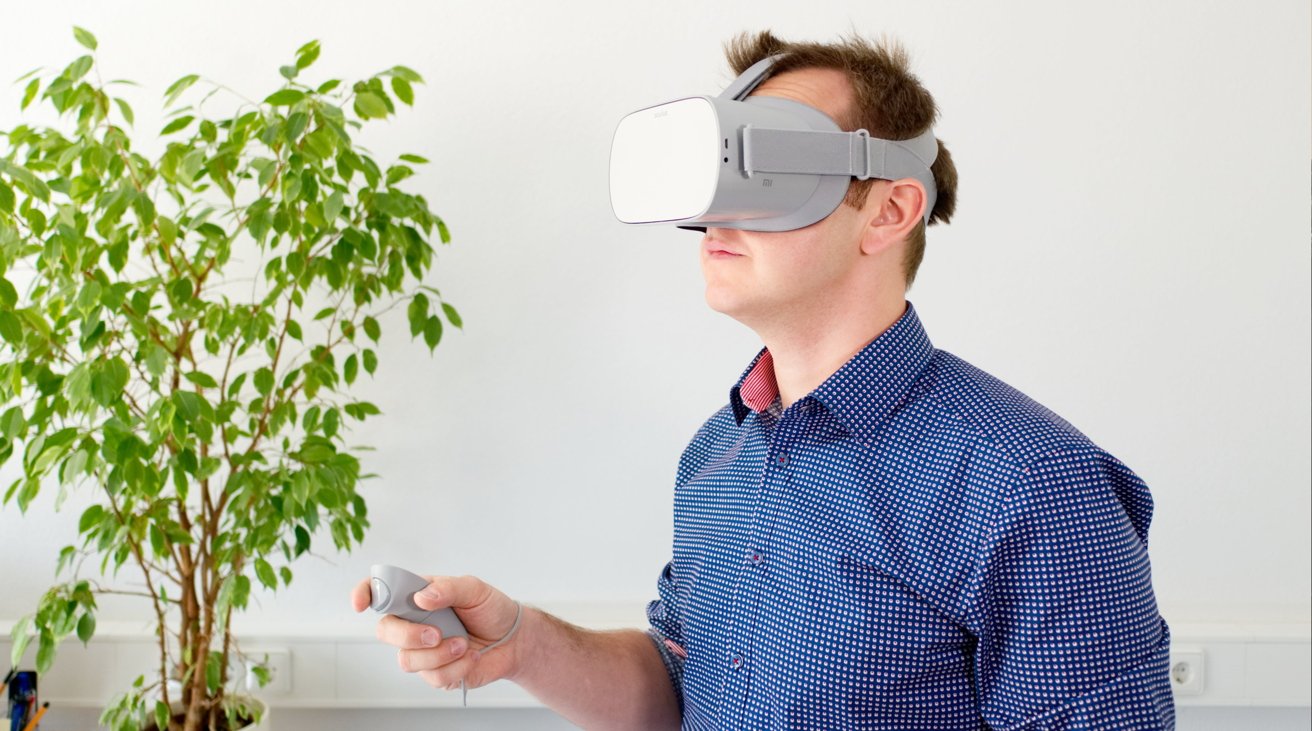
VR isolates the user into their own world
Today's VR helmets are a bit like 3DTV from a few years ago. They are fun to try for about 15 minutes, and appeal to certain small groups of technology enthusiasts. No amount of "journalistic" handwaving or other public relations activity has managed to get consumers to really enjoy 3DTV enough to drive sales of 3DTV sets in any sort of commercially sustainable fashion.
I once bought a 3DTV and some pairs of active LCD glasses just to frivolously experience the future promised by the big companies who were assuring us that we really wanted this latest fad and how this new technology would change how we experience things. I have to say -- it was no Macintosh.
Even with some concerted efforts at trying to enjoy and appreciate all the work that went into delivering it, 3DTV ended up a passing fancy. Video games, movies, even realtime simulation of existing content in 3D never really found its footing as on experience that anyone decided they should pay for with any longevity. I struggled to ever watch more than half of a 3DTV movie before reverting to 2D.
After a fiercely relentless push, TV makers eventually threw in the towel on 3DTV, shortly after 3D effects had made their valiant but fleeting efforts on smartphones and handheld video game devices.
Like 3DTV -- and the early smartphones of the early 2000s -- today's VR helmets are sharply constrained in utility by the limits of their low prices, while at the same time, devices asking for more money can't woo enough market share to develop a higher quality tier of functionality to establish a sustainable market that could support dynamic ongoing development. There's simply not enough critical mass to ignite an ecosystem to support life.
Following the model of big box retailers, big box device makers threw out their best efforts and then effectively responded to disinterest shown by the market. Just as the paper thin 3DTV experience flopped out of the gate, they gave up. The mirage of dimension layered onto the conventional TV wasn't going to be the new thing that sold another generation of TVs.Core utility in a vision
At the same time however, there is clearly some core utility in replicating a first hand visual experience. One of the most powerful, in person experiences to be created by civilization is the performance of live music and theater. Over the past century, the inherent entertainment value in live performances spawned the development of technology needed to record and deliver a reproduction of these experiences, both for the convenience and flexibility of delivering these to new and larger audiences, in other places and at other times.
Live music acts, theater, and vaudeville were first captured in audio recordings and rebroadcast as radio just over a century ago. The entire business of audio recording has been a rapidly evolving phenomenon up to today's reality of audio streaming, live FaceTime communications, and even Apple Watch's wearable Walkie-Talkie.
Apple only recently launched its immersive, surround sound spatial audio format, which quietly made a debut at WWDC before anyone seemed to anticipate the step arriving. For some time now, we've been able to deliver immersive, stereo audio to headphones in a way that makes you feel convincingly connected to a remote event, such as listening to a studio recording of a song. The evolution of teleporting a visual experience has been different and more complicated.
Apple uniquely saw the value in delivering a marketplace for recorded immersive spatial audio that can respond to head positioning, something that no other consumer tech makers were really focused on. Delivering a similarly immersive visual experience is more complicated.
Yet that's the core utility premise of Vision Pro: being able to experience immersive visuals. And not only see things, but be able to interact with what you're seeing in a human user interface presentation intuitively familiar to Mac, iPhone and iPad users.
We have two ears and two eyes, but the way our brains perceive audio and visual reality are different enough that it's quite a lot easier to deliver an immersive audio experience with headphones. Negotiating a way to not only present immersive video information to our eyes, but also sync that with head movement to create a convincing feeling of reality requires a significant level of infrastructure!
Apple didn't just focus on the concept of a wide, immersive field of view to put you close up and inside a video world, which is the minimum needed to deliver VR gaming. Vision Pro goes beyond that to deliver the kind of product Apple has become very successful in consistently producing: a bit mapped display tied to a consistent human user interface where targets are selected and manipulated as directly as possible.
That began with the Mac's mouse and later trackpads, then iPad's touchweel, iPhone's direct capacitive touch, and Apple Watch's Digital Crown and hand gestures. With Vision Pro, this interface expands to include eye tracking, allowing the user to interact with what they are looking at as effortlessly and intuitively as possible.Headed to Spatial
Apple also focused Vision Pro on the shoulders of giant technologies it had uniquely brought to the mass market, including spatial audio and the work it did to deliver augmented reality on the iPhone screen: effectively linking a moving screen and camera inputs to a synthetically created computing interface. These deliver the Mac-like human interface tied to a virtual spot in front of the user, allowing it to float in tandem with their head movements.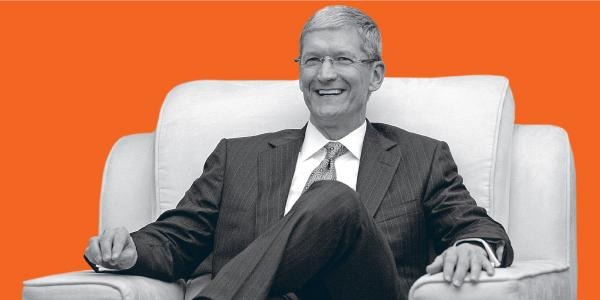
Tim Cook identified AR as key to his vision for the next big thing
It took Apple several years to develop AR features and the developer platform tools to support an AR ecosystem. It first positioned these as a cool feature on iPhones and iPad, but the real target was its eventual deployment on Vision Pro in an immersion environment.
Notably different from existing, purely VR helmets, Apple's AR approach allows the user to wear the device while not being isolated in their own darkened world of graphics. Rather than just looking at an eye level, immersive display, Vision Pro superimposes its graphical interface on top of what the user would be seeing without the helmet installed: a video feed of the outside world.
This dramatically changes the VR experience into one where the user isn't merely dropped into a solitary, enveloping world of fantasy, but is instead able to call up applications in front of them, and enjoy immersive audio and video experiences that they can dial themselves in and out of as they desire. Apple's recognition that users don't feel comfortable for extended sessions in a purely isolated VR world seems pretty essential to delivering a product one could wear in the workplace, or even at home, without fear of falling down or without needing full isolation from the inherent hazards of wearing a VR headset.
Further, the EyeSight feature Apple demonstrated-- which displays an image of the wearer's eyes on the front of the headset-- serves another important goal: it further integrates the wearer into their surroundings to other people in the room. Instead of being obscured and isolated inside of a VR realm, wearers are integrated into their surroundings, enabling the wearer to interact with others in the room and not trip over an end table or a child.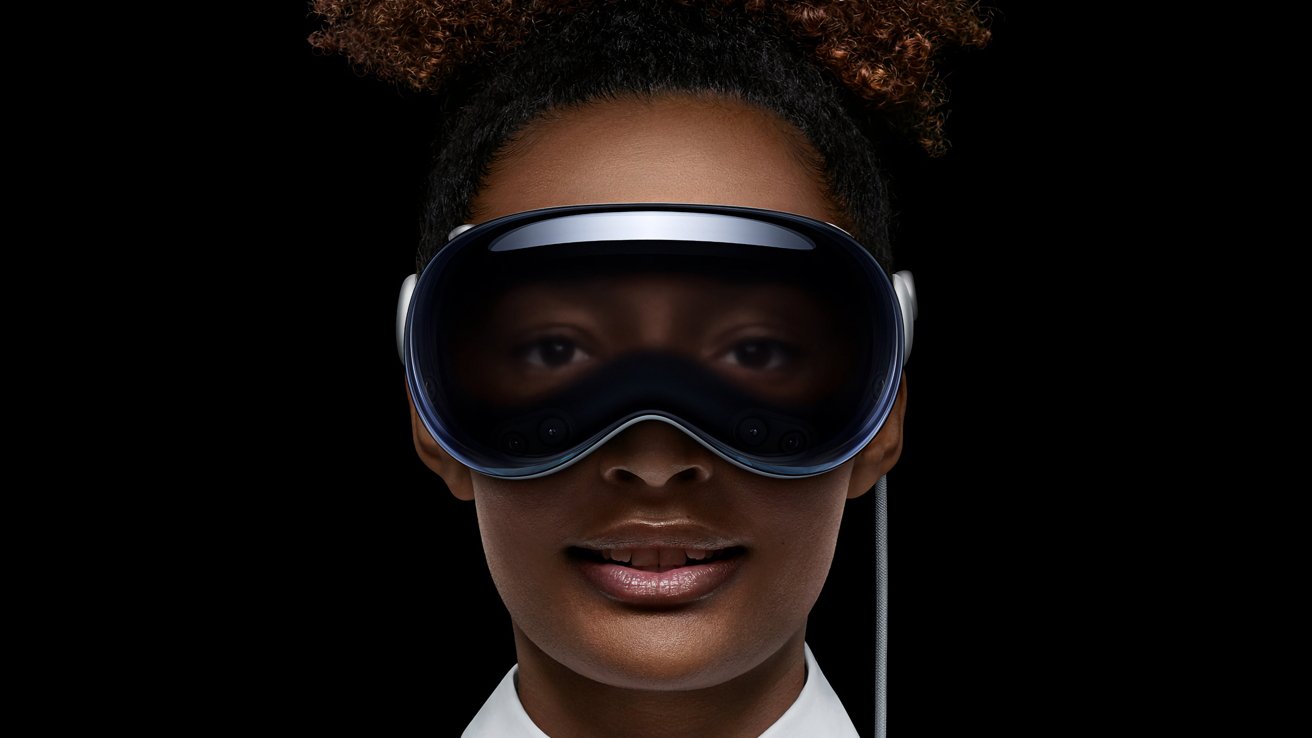
EyeSight shows a user's eyes on the external display
These important minimum capabilities of Vision Pro greatly expand its cost, making it significantly more expensive than gaming-centric VR rigs. But this core value and functionality contributes to making a system users can spend enough time using-- and functionally using-- greatly increasing its value proposition to the most valuable markets available.
Thus I think the killer app for Vision Pro will be a combination of its features: enabling virtual, facial appearance based communications rather than the cartoon avatars dreamed up in most VR, immersive enjoyment of recorded entertainment including virtually putting the user in an event, meeting or concert audience where they can actually participate in the experience both through AR inputs, and appearing to outsiders as an actual person, and an immersive desktop of familiar apps.Skating to where the puck will be
If these things sound familiar, perhaps you are recalling Steve Jobs' 2007 introduction of the iPhone, which he unveiled as an "iPod with touch controls, a phone, and a breakthrough internet communications device," which we could paraphrase as "media, communications and networked apps." It wasn't just three devices, it was three killer apps, all in one device.
At the time, Jobs likely didn't fully appreciate exactly how users would embrace iPod features from iTunes; Apple Music hadn't yet made the huge shift toward streaming (popularized by Spotify) as market demand shifted away from individual song purchases. Apple hadn't even lined up movie rentals in iTunes yet, which Jobs would later debut in 2008. Today's media experience on iOS has dramatically changed from its humble origins.
Apple also didn't quite know how Messages would ultimately work on iPhone. At the time, Jobs was promoting the utility of "desktop-class" emails over phone based SMS. The first iPhone couldn't even send MMS images.
Apple didn't debut FaceTime until iOS 4, and at its introduction, Jobs anticipated that the other phone makers would openly license the technology cross platform. Instead, its competitors of 2010 all rapidly died off, leaving only Google and its Android partners with nothing but contempt for Apple and its FaceTime. Google expected it would introduce its own FaceTime killer and leave iPhones out in the cold.
Instead, Apple today effectively owns secure phone messaging in the U.S. It brought Messages cross platform to its non-mobile IP devices (Mac, iPad and Apple Watch) beyond the iPhone's first origins as a way to interact with other phones. Messages is a primary reason why people migrate to iPhone. Who'd have thought at the release of iPhone this would happen?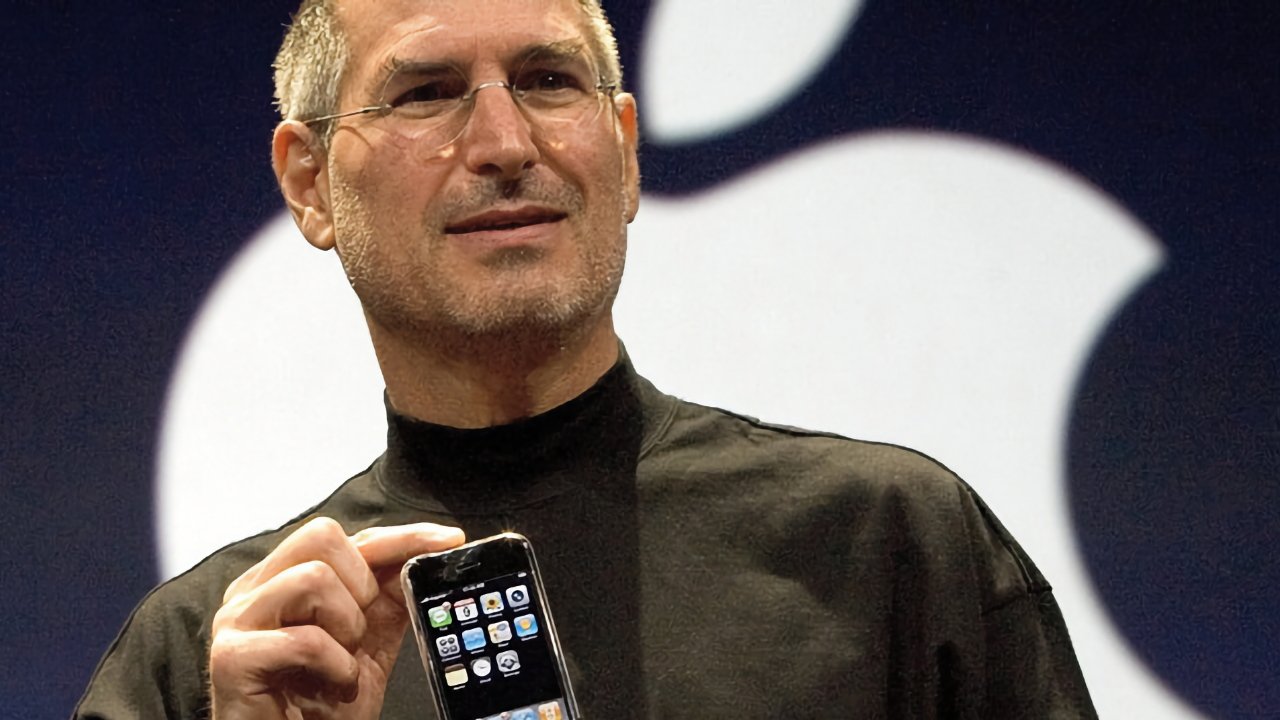
Steve Jobs introduced iPhone in 2007
Further, the apps platform Apple was working to deliver for iPhone in 2007 was limited to the first party tiles Apple could get out the door on the first generation. It had to scramble over the next year to put together third party access to outside developers.
Many thought Apple had simply failed to grasp the potential of third party apps for iPhone, but I had the opportunity to ask Jobs about Apple's plans for apps before iPhone's public release. He very clearly explained, in front of a meeting full of shareholders, that Apple knew this would be essential to deliver but that there were complex problems to solve first, including security and privacy issues.
At the time, pundits were adamant that Apple needed to deliver third party phone apps using Java and Flash. This was clearly not going to happen to anyone who had seen what Apple was working on at WWDC. I was able to write "Thoughts on Flash" before Jobs published his own version. Apple already had a development platform, and iPhone was effectively just a portable Mac. Apple didn't need Flash, it already had Xcode.Killer apps in reverse
Way back in 2007, Apple had outlined what killer apps would power iPhone. It wouldn't be one specific program the way VisiCalc had driven Apple II sales back in the late 70s, or the way PageMaker's desktop publishing had initially justified the purchase of high end Macs in the 1980s.
In the 1990s, Apple's platforms were driven by multimedia, but the increasing absence of key apps-- largely Microsoft's aging Office titles, as well as a variety of other key apps that were tied to Windows or prioritized their development to the PC, including many video games-- were killer apps in reverse: the essential software that kept people from buying Macs.
As the 2000s were about to begin, Microsoft and Sony DRM also threatened to cut off unobstructed access to commercial music, TV and movies to Apple's Mac platform, resulting in Apple's huge existential push to establish iTunes as a functional market for music, video purchases and eventually movie rentals and media streaming. That helped save the Mac from the killer app threat posed by DRM withholding media access. That effort also powered the rise of iPod and Apple's other mass-market, mobile devices.
By 2010, Apple was establishing iOS, and then iPadOS, as the most powerful and valuable mobile app markets, a huge shift from being the Mac underdog. Into the current 2020s, Apple has refined and homogenized its app development tools and deployment to facilitate seamless, portable app development across its platforms. This has set the stage for a powerful immersion app platform using a familiar interface, powered by the advanced new eye sight-based navigation of Vision Pro.Three killers in one
Like the original iPhone, the killer app for Vision Pro will be a similar, familiar combination of media, messaging, and apps that will evolve in concert with the direction of society and consumer demands. The first big features will be Apple's immersive version of its own apps, including support for viewing spatial images, panoramas and commercial movies projected across the user's view; other apps Apple demonstrated, including games; and AR-powered messaging that allows remote users to speak in a group as if they were actually in the same room.
Some aspects of these features already exist for VR helmets, the same way smartphones in 2006 could handle some form of media, communications and networked apps. Java and Flash applets weren't enough to keep enough excited buyers from opting to try iPhone, despite its cost premium over basic smartphones.
As I documented at the time, there were lots of expensive smartphones that cost more than an iPhone when it first debuted. But they were hard to use, offered unfamiliar interfaces, didn't achieve their own installed base with a critical mass to compete for app attention that could justify paying $900 or more for a cell phone to very many people. Today millions of Apple's customers willingly pay more than $1,000 for the latest iPhone every year.Killer app evolution
As Vision Pro begins to be more widely adopted, expect Apple's trio of killer app features to expand into roles uniquely exploited by its immersive hardware. One potential example in media is the experience of being at a concert or in front of a DJ or at a music festival or right on the field of a sporting event.
Perhaps you couldn't attend because it was far away, or months ago, or you had some disability that prevented you from being there in person. With Vision Pro, you can experience such commercial events either live remotely, or recorded as a memory you can virtually be inside. Many live experiences don't fully translate into a televised broadcast, which you notice when you have the opportunity to right in the action.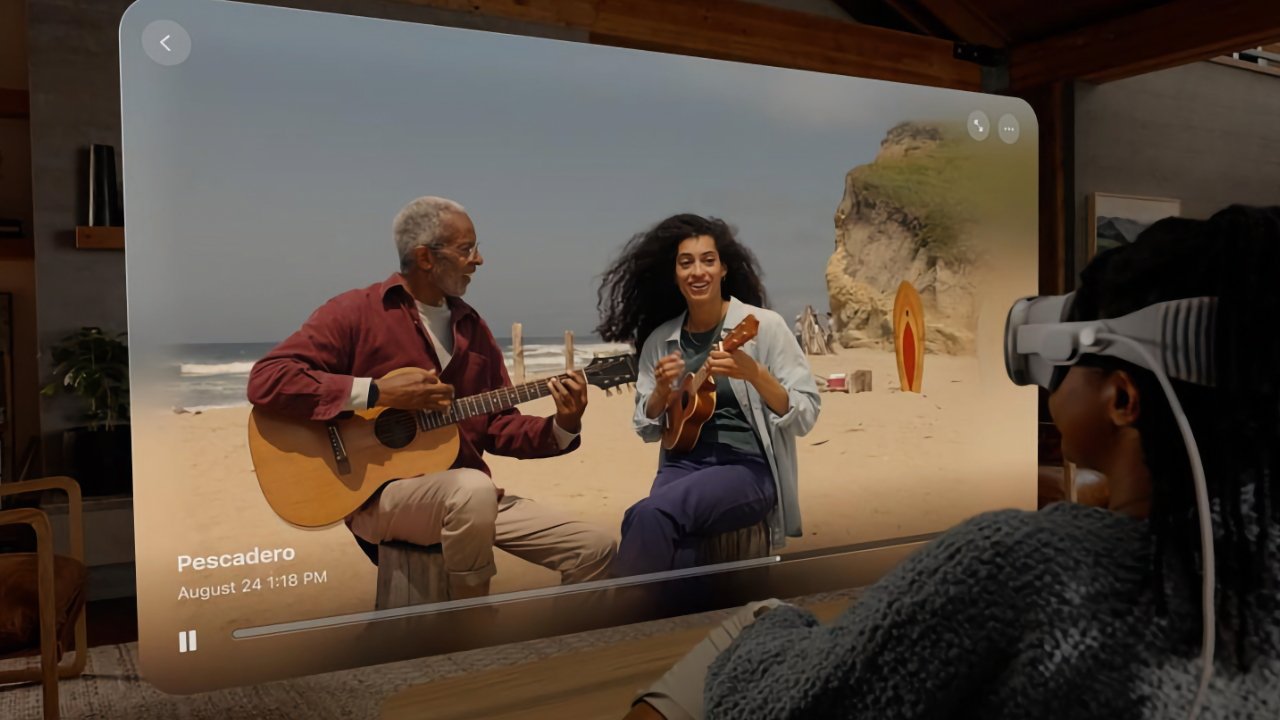
A 2D representation of Vision Pro immersion doesn't quite communicate the feeling
Some of today's iOS or iPad apps won't make an effective transition to Vision Pro. Clearly games will, as well as titles such as dating apps or virtual shopping apps that take you right to a merchant or inside of a property for sale or rent. You could visit a dealership and virtually kick the tires of a car that isn't for sale near you.
It's noteworthy that Apple pioneered early efforts to bring objects and 3D scenes to the Mac desktop with Quicktime VR back in the early 1990s. At the time, there wasn't today's App Store infrastructure or ubiquitous network connectivity to commercially exploit this capability. There sure is today.
In the area of communications, with Vision Pro you can speak to far away family members as if they are right there in the room. You can share the feeling of three dimensional memories as if you were watching from an angel's distance. Join a professional meeting and rather than being partitioned into Zoom squares, you're right there discussing subjects and seeing important facial cues and able to share your view of VR objects and scenes.
The most killer of apps? I think the core reason for many early adopters to spring for the initial model will ostensibly be a combination of collaborative work documents and AR FaceTime on expense reports, but will really be the immersive nature of relaxing to watch a spatial movie experience or to virtually arrive at a rave to other cultural experiences when you're too sick or perhaps too old to join in reality.
For these users, $3,500 will be money easily invested in a new platform from the established leader in mobile apps, media and communications, particularly one that has taken a strong public stance on protecting the privacy and security of its users. Google and Facebook tried to listen to your phone's microphone to harvest data on what you're doing. Would you trust ad firms to know what you're looking at? They're user exploitation firms, not secure device sellers.
The next question: how long can Apple deliver an unassailable lead in immersive experience headgear before the low price hardware makers and surveillance advertising firms rush in to try to compete on price with cheaper, less functional hardware and bundled spyware and ads designed to subsidize their discount? I'll take a look in an article next week, but share your ideas in the comments below.
Read on AppleInsider


-
Arm wants more than $0.30 per iPhone from Apple, but won't get it
Following Arm's recent initial public offering, it has reportedly been unsuccessfully pressing Apple to pay more than $0.30 per iPhone for its intellectual property.

Apple and Arm have a history that goes back decades to the Newton era. Back in the late 1980s, Apple even owned 43% of the company, but it steadily sold off its shares through the next decade.
Most recently, Arm issued its first IPO, and according to Reuters, Apple has invested somewhere between $25 million and $100 million.
Consequently, a new report from The Information that initially describes Arm as a straightforward supplier to Apple is unclear. Nonetheless, the report concentrates on the intellectual property licensing fees that Apple pays Arm.
According to Wednesday's report, Masayoshi Son, CEO of Arm's parent company SoftBank, gathered management to lecture them about how little money Apple pays.
Reportedly, Son told Arm management that Apple pays more for what The Information describes as "the piece of plastic that protects the screens of new iPhones" than it does to Arm.
Six years later, and after a blockbuster intellectual property licensing deal that will run for decades, Apple is reportedly paying Arm under 30 cents per device. This is said to be the lowest rate that any firm has with Arm, and specifically around half of what Qualcomm and Mediatek pays.
Apple is said to account for under 5% of Arm's total sales, and in the financial year ending March 31, 2023, Arm reported $524 million net income.
Apparently, Son is still waving an iPhone around in meetings, according to unspecified sources, unhappy at how Arm can be earning so comparatively little when its processors are in so many devices.
At some point since 2016, Softbank's Son phoned Tim Cook to say that Arm would be raising its prices. Reportedly, Cook's staff just referred Son to the contract Apple had with Arm.
With that door shut, Son tried getting Arm to raise prices with every other company it works with, and those firms pushed back enough that the plan was scrapped.
That contract between Apple and Arm was due to expire in 2028. The two companies have since signed "a new long-term agreement with Apple that extends beyond 2040," said Arm in September 2023, "continuing our longstanding relationship of collaboration with Apple and Apple's access to the Arm architecture."
Read on AppleInsider
-
Can Apple Vision Pro reinvent the computer, again?
As the universe counts down the clock to Apple's upcoming "reinvention" of augmented reality computing with its new Vision Pro early in the new year, it's useful to take a look at how successful it has been at reinventing the computing platform in the past. It's happened more often than you might think.
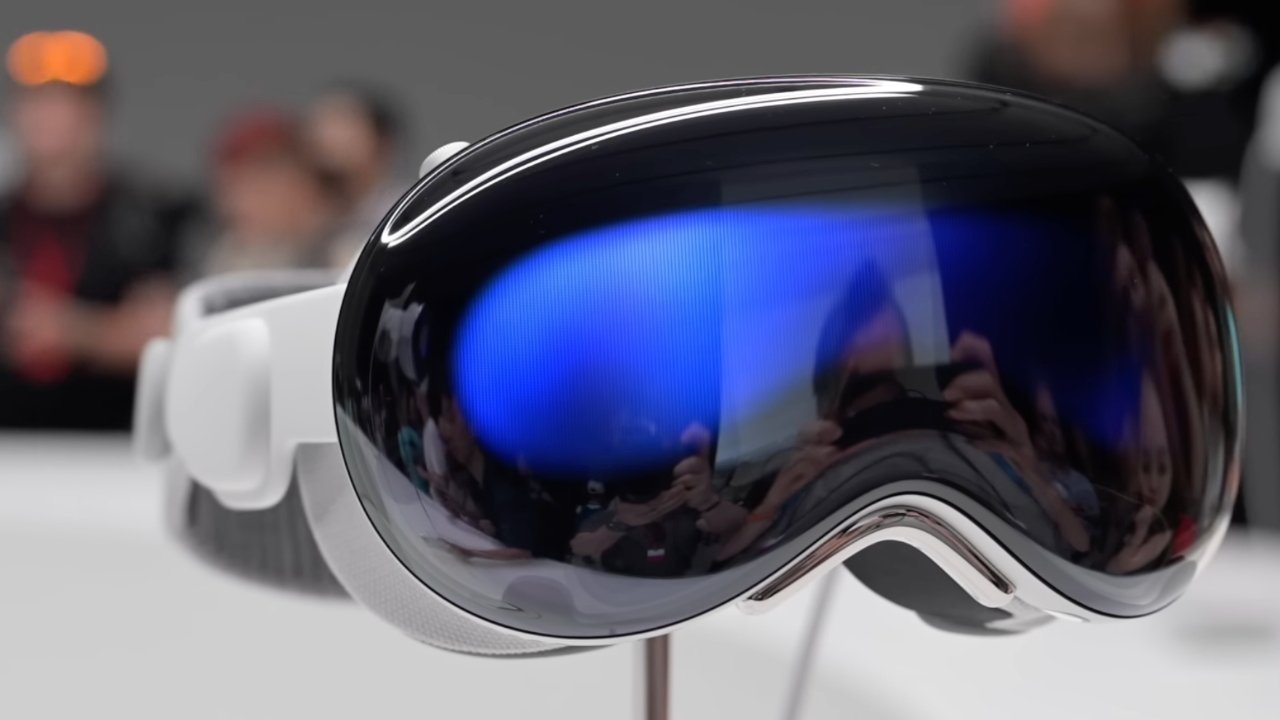
Apple has, quite miraculously, delivered the technology world an extraordinary list of world-changing innovations. It has invented and perfected entirely new products and platforms that shifted what and how consumers buy, monumentally changing how the world works, and drastically altering the commercial and industrial lay of the land.
Please indulge me a moment to articulate how this all happened before, as a way to confidently predict whether it can ever happen again.To prep yourself for Vision Pro, stop to appreciate the first Mac
The original Mac in 1984 not only changed-- across the entire industry-- how we worked with computers, but also changed how software was written. On that new Mac desktop, there was an under-appreciated innovation by Apple that decreed that all apps "must" share the same conceptual conventions, from copy and pasting to printing to saving documents.
You have to be quite advanced in age to even call into mind what a mess desktop computing was before the Mac, particularly in regard to third party computer applications -- or "computer programs," before Apple's Human User Interface Guideline writers coined the term that we today shorten to "app." The first Macintosh didn't just bring to market a new desktop appearance with a mouse and pointer; it also performed all the invisible heavy lifting to sort out how the desktop and its apps should function.
This was a sea change. Before the Mac, every function of every program on every computer needed to be learned independently-- they didn't work the same way. This benefited old app developers that made programs like Lotus and WordPerfect at the expense of everyone else, because it allowed them to create their own platforms of operation that served as difficult barriers of entry to competition.
Even Microsoft was prevented from a successful commercial launch its own new Office apps across PCs until it first copied Apple's well thought out aspect of the consistent Mac desktop design and finally delivered this to PC users just over a decade later with Windows 95. And most of that time involved litigating its way into finding a way to appropriate Apple's work without consequence.
Microsoft took the value Apple had created and reused it to power sales of Office, eventually erasing any need for anyone to pay Apple for Mac hardware just to get the Mac-like value of its design consistency.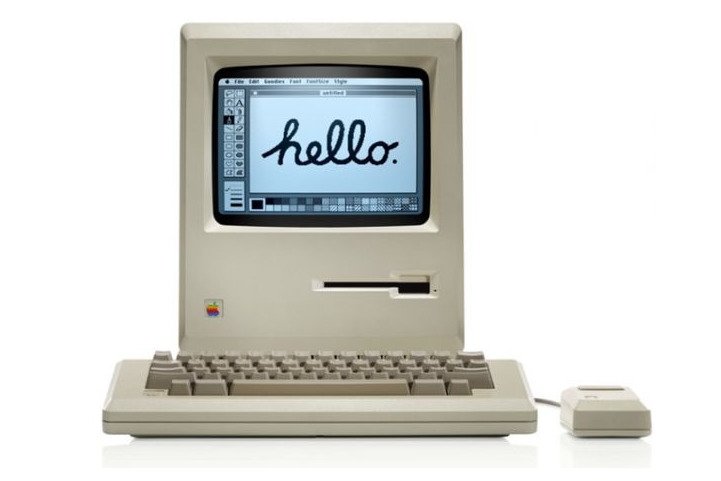
The original Mac certainly was for a time a moneymaker for Apple, but it ended up that Windows 95 had far more impact on the world, from users to the apps industry, because Microsoft didn't just copy Apple once. Microsoft kept adapting its Windows product line to find and attract more customers and more platform partners.
Apple lost out on the computing reinvention it had ignited because it got sidetracked in delivering things people weren't going to be paying for (like OS support for crafting fancy ligatures) while failing to control the underlying technologies powering its product and delivering the value that people would actually pay for.
By 1996, Apple was already in free fall. That's a quite rapid implosion following the broad commercial introduction of Windows 95 as a "cheaper Mac" just a couple years earlier.
That fall was so rapid and so dramatic that it impressed itself in the minds of PC journalists and thinkers for decades the way that the Great Depression and WWII and Vietnam and COVID-19 all seared the life experience of the generations of people who lived through them and forever scarred how they think, act, and understand the world.
Almost another decade later, Apple was still viewed by almost everyone in tech media as the "beleaguered company that had failed," which could never again catch up and certainly even if it did would have its crown taken away, probably again by Microsoft. All of the valuable lessons of the first Macintosh were largely erased and replaced with a pure fallacy that anything that seemed to be cheaper and perhaps more "open," in the way that the Windows PC was, would "always win."Apple reinvented mobile computing
If you were alive and voraciously reading about consumer technology in 2006 (perhaps a larger part of my core audience, although still a slim subset of today's population) you can certainly recall the second "reinvention of computing" that Apple is broadly credited with. At that time, the new Phone hadn't shipped yet, but the tech world was abuzz with rumors and analysis that suggested something big was around the corner, much the same as in today's prelude to Vision Pro.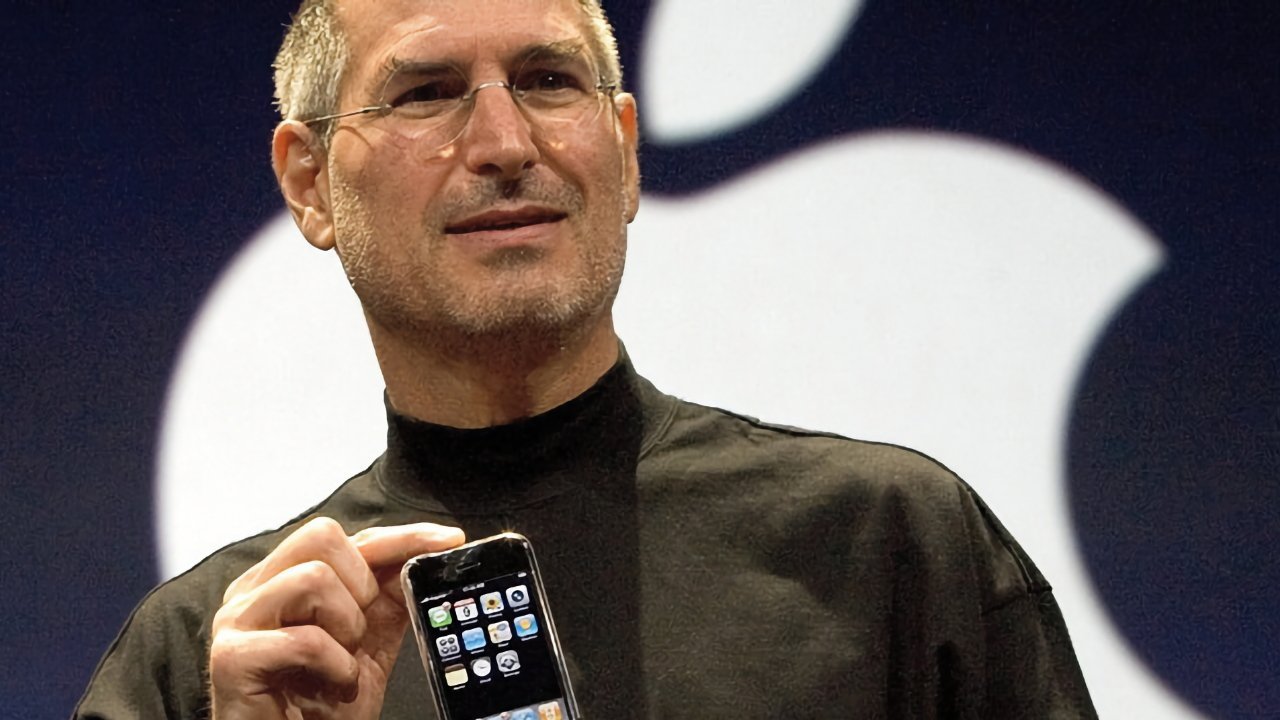
Today, we are currently living in the giddy period of time comparable to early 2007, after Steve Jobs had showed off new iPhone at the January Macworld Expo, but before it actually went on sale that summer.
We had seen marketing photos of it, we got to see the general outline of how it works, we had some understanding of the internals. But, we were also getting fed non-stop criticism and some full-on disbelief by parties representing the rival companies that would ultimately be crushed by its arrival.
Back then, it was difficult to be taken seriously in thinking that there was any chance that Apple would "walk right in" and suck all the oxygen away from the world leaders in mobile devices. That included the once giants Nokia, Motorola, RIM Blackberry, Ericsson, Sony, Palm and so many more that had been the Lotus and WordPerfect of their era.
In large part, that perception was held was because Apple had fallen ten years prior when Microsoft and all the hardware companies that were failing to make their own Mac competitors joined together for Windows 95 and ultimately snatched away Apple's desktop crown. Surely history would work out exactly the same this time, right? Yet as anyone who follows fashion or history knows, trends don't repeat, they rhyme.
When you're old enough to see cycles happen, you can adapt to them, just as Apple did.Apple had already reinvented mobile computing
All those years ago, Apple's first iPhone in 2007 was greeted with some significant skepticism not only because tech writers had fresh in mind the previous vanquishing of Apple's Mac by Microsoft, but also because they had grown used to repeating the public relations narratives of another group of industry competitors: the iPod killers who never actually killed the iPod.
Apple's 2001-2006 iPod era had been a monumental, preliminary part of its sneaky introduction of iPhone that allowed the company to eventually (and then quite rapidly) obliterate every existing facet of the then-existing telecom industry and replace everything with its own design.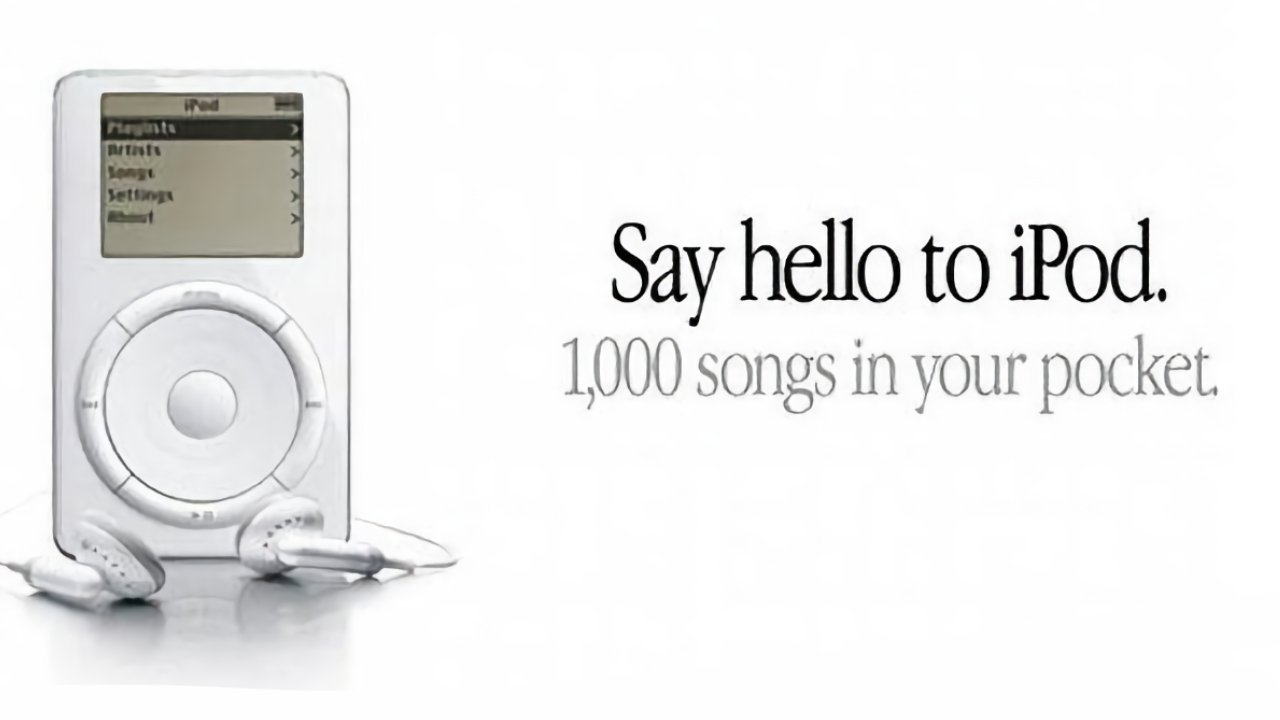
Some smartphone executives, like Palm's CEO, famously mused that Apple wouldn't "walk right in." Others, like Microsoft's Steve Ballmer nervously laughed at how "expensive" iPhone was compared with what they'd been commercially struggling to offer to consumers during the pre-iPhone era.
Both also knew in the back of their minds something else had already occurred. Apple had just spent years "walking" into the consumer music industry with its unusually "expensive" iPod, and yet customers globally could barely contain themselves from buying millions of new ones every year.
Buyers were primed to demand an iPhone even before it went on sale because they'd already seen what a convenient, valuable mobile music (dare I say PDA?) device that iPod had been, consistently year after year following its incremental arrival as a luxuriously extravagant way to have "1000 songs in your pocket," something a CD Walkman couldn't do, and something that the digital music industry's heavyweights Sony and Microsoft couldn't similarly pull off despite their own unfettered access to the same core technologies Apple was using.
Apple didn't have some unique access to digital music storage, FireWire connectivity, music library software, or mobile device hardware construction that Sony and Microsoft and the other iPod killers lacked. Apple was the underdog.
Yet, Apple came out on top and turned the "MP3 player" industry upside down the same way that it had introduced the Mac, and the same way it would subsequently introduce iPhone.
For all three products, Apple first worked internally for a significant time determining how it could ship a functional device with some serious limitations, then dramatically introduced a real product while clearly communicating its value, as it worked with platform partners to help it bridge the things it couldn't do alone. It had also learned-- certainly with the return of Steve Jobs-- that every interaction also needed to be followed up with relentless advancement to keep it ahead of another Microsoft-ing.
A main reason why iPhone-era critics were so flabbergasted by the success of Apple's new phone is that they'd preached for so long that Apple was soon going to lose its iPod business that they believed it themselves as a core of their understanding of reality. But of course, competitors can't walk in and steal away your core competency when you simply transition it into another product that's even better and ever harder to copy.Figure out what's next!
"I think if you do something and it turns out pretty good," Jobs once observed, "then you should go do something else wonderful, not dwell on it for too long. Just figure out what's next."
At first glance, that might not seem the most eloquently pithy thing a tech visionary has said.
Yet, Apple printed out those words and emblazoned them in its original campus in a prominent location outside its first theater, in a place not only easily seen by its employees, but also by investors and the tech media it would invite to see whatever it was figuring out to be next.
When Jobs returned to Apple, his first priority was to figure out what was next for the Mac, in the perilous years after Microsoft had ripped off all of its apparent value and passed that off as its own work. The pillaging of the Mac as a product and platform by Windows 95 had been devastating for Apple as a company, economically, intellectually, and reputationally.
Yet by returning to and refining the core principles of how to be an innovator, Apple not only reinvented the Mac using NeXT's software to establish a new platform that could generate revenue and get Apple back on the right track, but subsequently could branch out into music with iTunes and iPod, then into mobile phones with iPhone. Those were not simply "two new products." They were product lines that relentlessly advanced every year.
Just three years later, Apple took the technology and techniques that got it that far to introduce iPad, revolutionizing the "tablet market," as well as erasing the supposed markets imagined for netbooks, super cheap laptop PCs, Chromebooks, convertibles and folding screen phones, and so many more half-baked product concepts that flopped out into the market without being ready, without communicating clear value, without forging effective partnerships, and without being relentlessly advanced after their version 1.0.
The outside tech world has failed to grasp why Apple became so successful. Since 2010's iPad, the Microsofts and Androids of the world have desperately tried to launch volleys of fancy new smartphones and tablets with little success. Yet even as they have repeatedly failed to snatch away Apple's crown following the model of Windows 95 (and folks, that one-time intellectual shakedown occured nearly 30 years ago), Apple has moved into building new branches.The conspiracy to tell everyone that Apple isn't figuring out what's next
Since 2001, Apple not only vanquished every major MP3, mobile phone, and tablet maker with the arrival of iPod, iPhone and iPad across the first years of the Millennium, but has subsequently moved into wearables with Apple Watch, hearables with AirPods, whereables with AirTags, and televisisables with the new iOS-based Apple TV across the last several years.
I'll leave it as an exercise for the reader to figure out which terms I coined.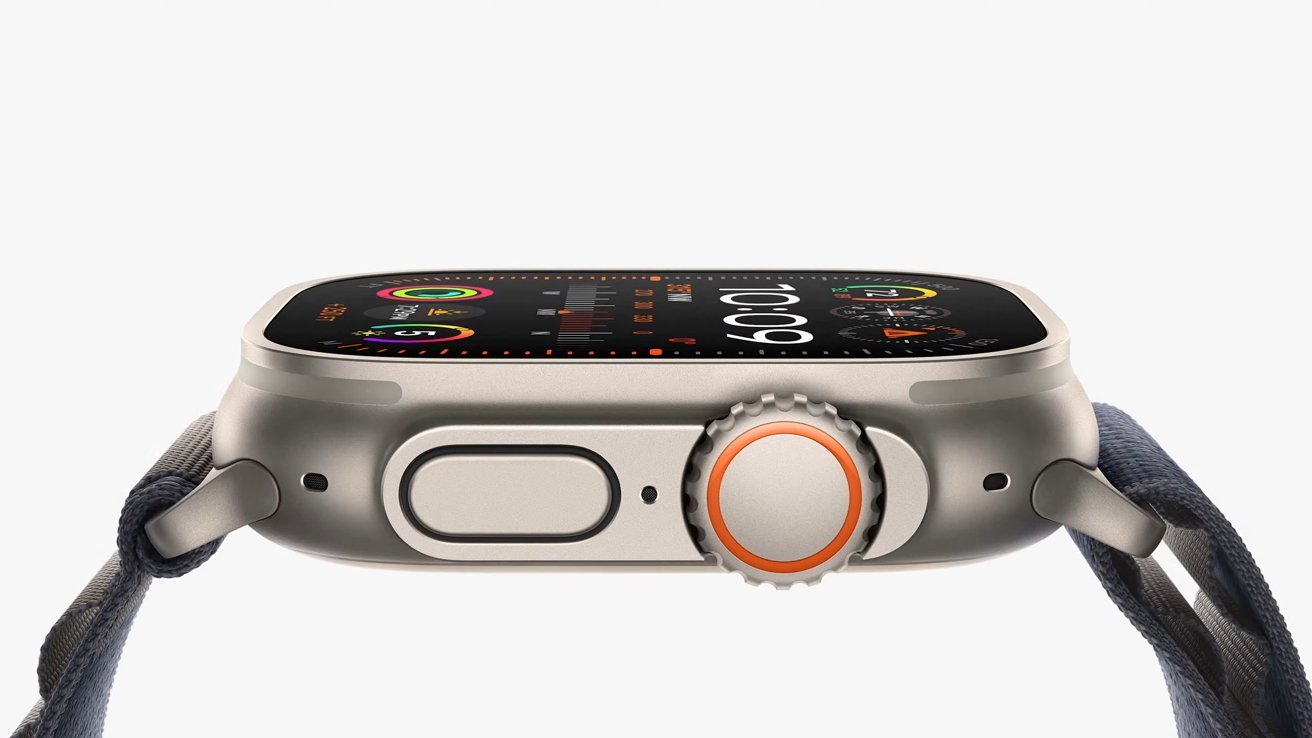
At the risk of sounding fan-boyish (for which I am not at all embarrassed or concerned about being labeled as, because the shoe fits) I have to proclaim that Apple has pulverized any threat of competitive usurpers from wrenching away its markets for music, phones, tablets, watches, earbuds, home devices and TV entertainment and running with an embezzled copy of its platforms and products. Not even Samsung's most eye-rolling copies have enjoyed long-lasting success.
This makes it really bizarre to try to understand why every contrarian blogger-analyst pundit in the technology world thinks that Apple "isn't innovating" but somehow the industry's commercial losers are because they have something quirky and different and perhaps it's cheap or folds somehow or can load up software in a way that makes it unsafe at any speed. Sometimes things are controversial but sometimes it's just ignorant conspiracy floated by people who want things to be different, either because they want to get paid to deliver some ideology or because they're so blinded by it they're volunteering for free.We live in the best possible tech universe alternative
That being said, today's Apple is also not erecting the kind of ugly monopolistic empire of half-assery that Microsoft established in the miserable tech decade after it stole the valuable concepts of the Mac way back before most people today were even born or were at least aware of what a computer is. The U.S. median age is under 40 if you need to feel older today, but let's not dwell on that.
Today, if you want a smartphone, tablet, sliding or folding PC, headphones, watch, or TV dongle made by a company that isn't Apple, you have an exceptional range of suitable products that will delight you and which can be used without concern that Apple will somehow deprive you of access to media, apps, or services the way that Microsoft deliberately leveraged its Windows monopoly to force professionals to buy a PC and pay for Windows licensing taxes even if they just wanted to run a Linux command line.
Sure there are debatable criticisms about whether Apple should be compelled to write and maintain its own software for your oddball platform choice, or whether it should allow you the Owner to swap out a broken OEM component for some counterfeit part you sourced from the People's Republic of China at a discount, or whether Apple should be forced to build and maintain non-vetted App Store access to competitors who don't want to have to support the safe and reliable platforms they use and their customers have chosen, or whether Apple should have to implement some tight integration between its messaging platform and the competitor who claimed for decades to be "better at software" and have "more customers choosing its alternative" with a flurry of failed messaging platform flops that it couldn't deliver on its own.
But despite these ostensibly controversial beefs, the reality -- or perhaps "spectrum of indisputable facts" -- details that we are living in the best possible alternative universe of technology, where there's a great company that delivers the best stuff that's all quite expensive but worth it. And yet, there is also vibrant and significant competition allowing for fans of another variety to own a Pixel paired with a round watch and busy-box folding screen PC with a stylus marker and USB-A ports if they really want to swing that way.
And if your text bubbles are green as a consequence, deal with it. It's nothing like being forced to use Microsoft DRM or a Windows web browser, or dreadful smartphones with buttons, or be forced to use Cingular, or be tracked with surveillance advertising, or slowed to a crawl by "Defender" malware scanning.Will the best possible alternative reality deliver the best possible immersive reality?
Now perhaps you've already made the connection, but the crux of the rhetorical question I wanted to answer here unequivocally is: what if the reinvention of computing that we anticipate to be just around the corner with Vision Pro has already been delivered, at least in principle?
What if Apple already demonstrated that it can reinvent computing and we just haven't fully appreciated it yet, because we're like frogs in the incrementally hot water waiting for things to get dangerous?
Just as incessant waves of new iPods set up the world for the revolution of iPhone-- from its core technologies to its operational handling of massive-scale component purchases orchestrated by a younger, almost unknown at the time Tim Cook, to its internal software helmed by Scott Forstall, and music platform run by Eddy Cue, its industrial design championed by Jony Ive, and its retail store development launched by Ron Johnson -- tomorrow's Vision Pro sits on the same technological foundations that have incrementally revolutionized Apple's current Macs.
The Mac just hasn't got so much credit for re-revolutionizing the PC world and setting up Apple to obliterate computing done immersively rather than on a display screen. Yet much the same way that iPod prepared the universe for iPhone, today's Mac has shifted from being just a customized Intel PC running its own software not so long ago, to being a completely custom device with more in common with today's iOS than the original Macintosh or a Windows 95 sort of thing.
Key to this has been software transitions recently floated which uniquely bring the vastly larger platform of iOS and iPad apps to the Mac, facilitating internal cross platform developments such as Home, News, Maps, Music, TV, Podcasts and so on, on the Mac. Additionally, Apple Silicon incrementally brought tight firmware integration into MacBooks with chips that first handled more types of media encoding and authentication and security tasks, then launched to full Intel-free Application Processor SoCs (those delicious M chips) that radically changed Macs into instantly booting, snappily launching, battery sipping, super advanced machines that have left PC makers as flatfooted as yesterday's smartphone makers in 2007 or tablet manufacturers in 2010.
And just a back then, Apple's competitors and their PR staffs with their tightly integrated tech journalists keep telling us that really soon now, perhaps right around the corner, their own PCs will also have advanced "ARM chips" with integrated GPUs and AI engines that don't require huge fans and air ducts and howling vents. Someday real soon Windows will deliver Voice First or some kind of AI that will do everything for you.
Maybe it will even recognize when you've been infected with malware -- or maybe it will skip the middleman and take advantage of you with tracking and surveillance advertising in order to make itself more affordable.Technology doesn't come first!
Tech bloggers: stop begging for titillating innovation over titivating incremental improvement! And stop asking for Apple to shoehorn the latest tech fads into its products. Jobs himself detailed why functionality came before technology.
"One of the things I've always found is that you've got to start with the customer experience and work backwards to the technology," Jobs told developers as he returned to Apple. "You can't start with the technology and try to figure out where you're going to sell it. And as we have tried to come up with a strategy and a vision for Apple, it started with What incredible benefits can we give to the customer? Where can we take the customer?' Not starting with Let's sit down with the engineers and figure out what awesome technology we have and how we're going to market that.'"
As someone who had to become an expert in decrypting the false promises of the technology industry, I can bypass having to explain why all of this is meritless, simply by pointing out how rapidly Apple has been incrementally enhancing all of its platforms, and how its now poised to deliver the first step in immersive computing while delivering the world's advanced computing platform that already works today.
I've been scoffed at for years for pointing out that Apple hasn't really had any real threat from competition for many years, and in hindsight it's hard to argue that it has. Yet there's enough efforts at competition-- billions thrown away from Google, Microsoft, Samsung and China's state makers-- all trying to be Apple, that it effectively keeps the company from getting too comfortably numb to the real risk of complacently.
The biggest actual risk to Apple today is that the world might collapse into total chaos and a new era of medieval war, superstition and environmental catastrophe. But short of that, we're in the best timeline we can be in for the launch of Vision Pro. And the best thing for Apple: it's so safe and functional right now that it doesn't need a lucky Hail Mary pass to save it from apparent economic disaster the way it did in 1996 or 2001 or 2006.
Vision Pro can incrementally slip out like a delicately birthed helpless child and take years to develop into an AR warrior. We can all leisurely bathe like frogs in its warming waters until it lights up and takes over the world and cooks off any existential competition to delivering a computing world that puts us in the center.
Because Apple is already really adept and doing that. When you boot up your M-series Mac you're already nearly there.
Read on AppleInsider







